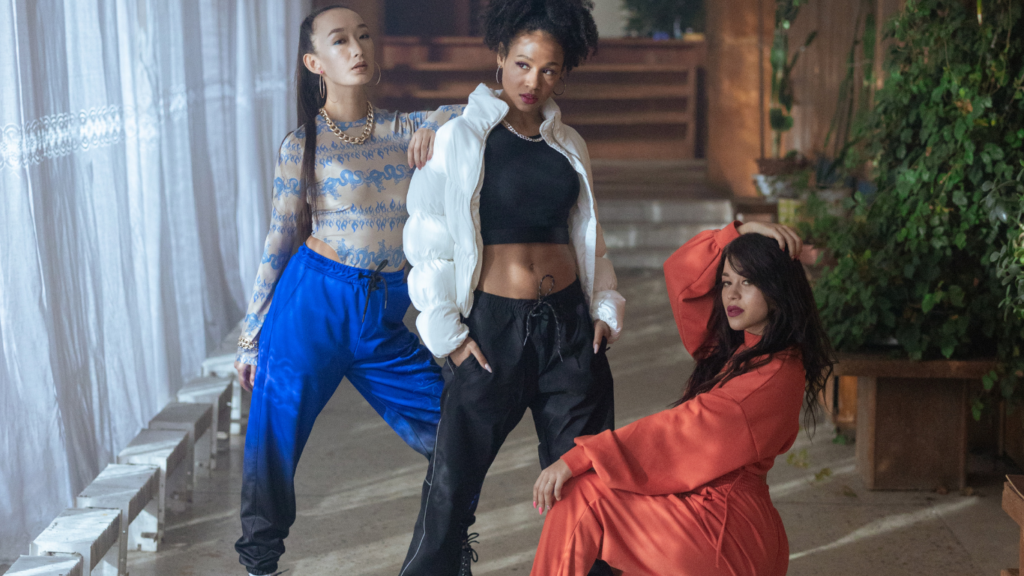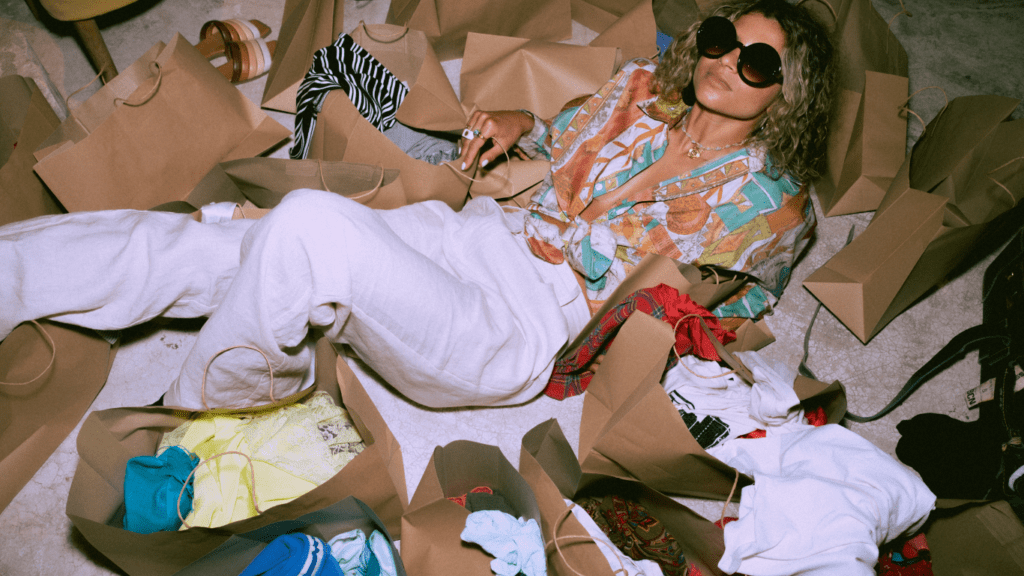Origins of Streetwear
Streetwear emerged in the late 1970s and early 1980s. Initially, it drew heavy influence from the surf and skate cultures of California. Brands like Stüssy and Vision Street Wear became pioneers, blending functionality with bold graphics. These labels catered to a youthful demographic, embedding a sense of rebellion and individuality into their designs.
In the 1990s, streetwear expanded its horizons. Major cities like:
- New York,
- Tokyo
- London
became breeding grounds for hip-hop artists, graffiti artists, and DJs who shaped the visual and cultural aesthetics of streetwear. Supreme, founded in 1994, epitomized this evolution by fusing skate culture with urban sensibilities, gaining global recognition.
The rise of the internet in the early 2000s democratized streetwear further. Online forums, blogs, and social media platforms allowed enthusiasts to share ideas and trends rapidly. Iconic drops from brands like A Bathing Ape (BAPE) and collaborations with artists and other brands enhanced streetwear’s allure, blending exclusivity with mass appeal.
By the mid-2010s, luxury fashion houses recognized streetwear’s influence. Brands like Louis Vuitton and Gucci began integrating street elements, collaborating with streetwear designers, and debuting sneakers and hoodies on their runways. These collaborations blurred the lines between street culture and haute couture, cementing streetwear’s role in high fashion.
Evolution of Streetwear in High Fashion
The fusion of streetwear and high fashion has created a new paradigm in the fashion industry. This convergence redefined trends, aesthetics, and market dynamics.
Key Collaborations
Collaborations between high fashion and streetwear brands have been crucial in this evolution. In 2017, Louis Vuitton partnered with Supreme, a seminal event that showcased streetwear’s influence on luxury fashion. This collaboration blurred the lines between exclusive and accessible fashion.
Another notable alliance involved Dior and Nike’s Air Jordan. The 2020 collaboration resulted in a limited-edition sneaker, creating significant buzz and demand. These partnerships not only leveraged each brand’s strengths but also created unique, coveted items.
In addition, Off-White’s Virgil Abloh, who also served as Louis Vuitton’s Artistic Director of Menswear, collaborated with Nike. His “The Ten” collection transformed classic Nike sneakers into high-art collectibles, further bridging the gap between street and high fashion.
Pioneering Brands
Several pioneering brands played pivotal roles in integrating streetwear with high fashion. Stüssy, one of the earliest streetwear brands, laid the foundation in the 1980s. Its influence trickled into the high fashion realm, inspiring a new generation of designers.
Japan’s A Bathing Ape (BAPE) emerged in the 1990s as another influential brand. It was instrumental in introducing streetwear’s bold graphics, eclectic styles, and limited releases to a broader audience, eventually catching the eye of high fashion circles.
In the luxury segment, brands like Gucci and Balenciaga embraced streetwear aesthetics. Alessandro Michele of Gucci introduced bold patterns, oversized silhouettes, and sneakers into the brand’s collections. Similarly, Balenciaga, under Demna Gvasalia, adopted streetwear elements like hoodies and graphic tees, making them runway staples.
The evolving landscape of streetwear and high fashion continues to shape future fashion narratives.
Streetwear Icons and Influence
Streetwear has left an indelible mark on high fashion through its iconic designers and celebrities. These cultural leaders have seamlessly bridged the gap between casual and luxury fashion.
Designers
Certain designers have become synonymous with the fusion of streetwear and high fashion.
- Hiroshi Fujiwara, often dubbed the “Godfather of Streetwear,” has influenced brands like Nike and Fragment Design. His minimalist yet impactful designs have set trends across the globe.
- James Jebbia, founder of Supreme, has turned a skate brand into a global fashion powerhouse. Supreme’s limited-edition drops and high-profile collaborations, like the one with Louis Vuitton, have redefined exclusivity and luxury.
- Virgil Abloh, founder of Off-White and artistic director at Louis Vuitton, has integrated streetwear elements into high fashion. His use of quotation marks and zip ties in designs has become iconic, symbolizing the merger of street and couture aesthetics.
- Demna Gvasalia, creative director of Balenciaga, has brought streetwear’s raw and unfiltered elements into the luxury brand. His oversized silhouettes and urban-inspired collections have appealed to a younger, fashion-forward demographic.
Celebrities
Celebrities play a crucial role in bridging streetwear and high fashion.
- Kanye West’s Yeezy line with Adidas has revolutionized sneaker culture. His designs frequently sell out within minutes, proving the massive influence he wields in both streetwear and luxury markets.
- Rihanna’s Fenty brand combines urban style with high fashion. As the first woman of color to head a luxury fashion house, her influence extends beyond clothing, pushing for inclusivity and innovation in the industry.
- A$AP Rocky, known for his impeccable style, has collaborated with brands like Guess and Under Armour. He effortlessly merges street and high fashion, setting trends across both domains.
- Pharrell Williams, with his collaborations with Adidas and Chanel, continually pushes boundaries. His unique style mixes elements from both spectrums, making him a pivotal figure in the melding of streetwear and luxury fashion.
These designers and celebrities have profoundly impacted how streetwear is perceived and integrated into high fashion, creating a dynamic and evolving landscape.
The Commercial Impact
Streetwear’s influence on high fashion isn’t just cultural, it’s also a major commercial force. The fusion of these two fashion worlds has sparked significant growth and innovative strategies.
Market Growth

Streetwear’s market has skyrocketed in recent years. According to Business of Fashion, the global streetwear market reached over $309 billion in 2019. This sector is growing 5 times faster than traditional luxury. This explosive growth stems from millennials and Gen Z, who prioritize self-expression and authenticity. For example, market demand for exclusive drops and limited-edition items has surged.
Brand Strategies
Luxury brands now prioritize streetwear to captivate younger audiences. Collaborations illustrate this approach. Louis Vuitton’s partnership with Supreme in 2017 generated enormous buzz and sales. Gucci’s logo-heavy designs echo streetwear’s bold aesthetics. Strategies like limited releases and influencer endorsements drive brand visibility. By blending exclusivity with cultural relevance, brands effectively tap into the lucrative streetwear market.
Criticisms and Challenges
Streetwear’s integration into high fashion hasn’t been without its detractors. Key issues include cultural appropriation and the tension between quality and quantity.
Cultural Appropriation
Critics argue that high fashion’s adoption of streetwear often exploits cultural symbols without proper acknowledgment. Brands sometimes borrow elements from marginalized communities but fail to credit or compensate the originators. This practice can lead to accusations of insensitivity, as seen in the backlash against fashion houses that use indigenous patterns or hip-hop aesthetics without understanding their cultural significance.
Quality vs. Quantity
There is a notable debate around the mass production of streetwear. High fashion emphasizes craftsmanship and exclusivity, while streetwear often focuses on quick turnover and widespread availability. This tension can dilute brand identity and raise concerns about sustainability. Some fashion enthusiasts feel that the fast-paced production compromises the quality associated with luxury brands, potentially alienating loyal customers who prioritize durability and premium materials.
The Future of Streetwear in High Fashion
Streetwear continues to shape the landscape of high fashion, creating a blend that’s impossible to ignore.
Emerging Trends
Streetwear’s influence on high fashion surfaces in the evolving trends seen on runways and streets alike. The rise of collaborations between luxury and streetwear brands exemplifies this trend. For instance, partnerships like Travis Scott with Dior or Virgil Abloh with Louis Vuitton show how high fashion adopts streetwear aesthetics. Tech-infused fabrics and oversized silhouettes, once limited to streetwear, now appear in high fashion collections. Consumers demand unique, innovative pieces, pushing brands to integrate functionality with style.
Sustainability
Sustainability stands at the forefront of the fashion industry, influencing streetwear’s future in high fashion. Many brands incorporate eco-friendly practices to meet growing consumer expectations for sustainable fashion. For example, Adidas uses Parley Ocean Plastic in its products, reducing plastic waste. Balenciaga’s recent collections highlight recycled materials, signaling a shift towards eco-conscious design. This trend aligns with streetwear’s focus on individuality and responsible consumption, making sustainability integral to its future in high fashion.



 Beauty Product & Fashion Brand Reviewer
Elizabethie Vallestiera is Glam World Walk's go-to expert for in-depth beauty product reviews and luxury brand spotlights. With a meticulous approach to analyzing the latest beauty innovations, she ensures that readers are always informed about the best products on the market. Elizabethie’s passion for uncovering the stories behind iconic fashion brands makes her articles not only informative but also captivating, offering a blend of style, substance, and glamour that readers crave.
Beauty Product & Fashion Brand Reviewer
Elizabethie Vallestiera is Glam World Walk's go-to expert for in-depth beauty product reviews and luxury brand spotlights. With a meticulous approach to analyzing the latest beauty innovations, she ensures that readers are always informed about the best products on the market. Elizabethie’s passion for uncovering the stories behind iconic fashion brands makes her articles not only informative but also captivating, offering a blend of style, substance, and glamour that readers crave.
